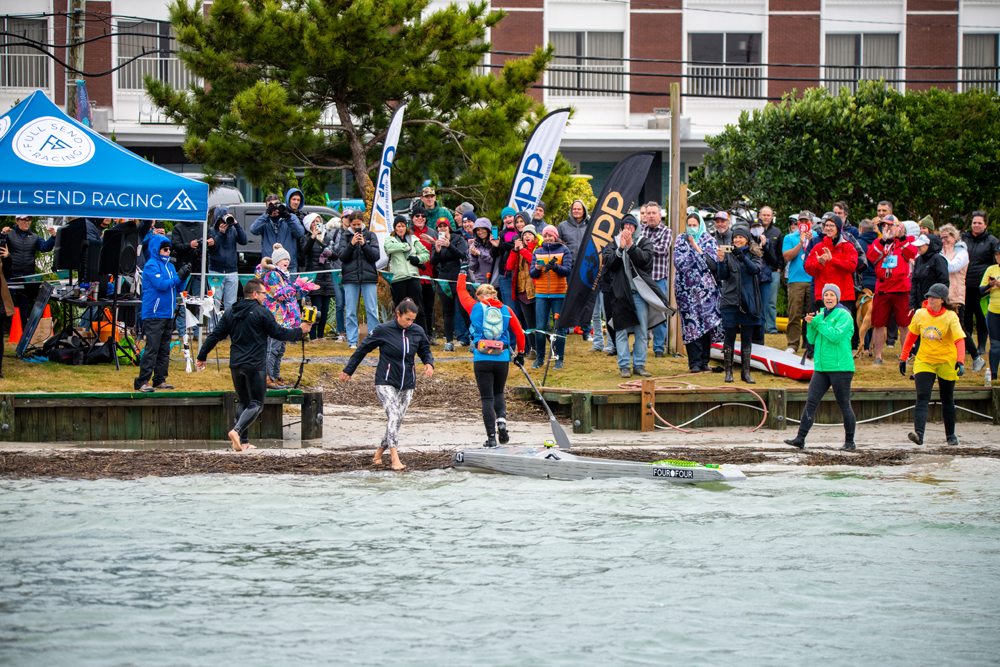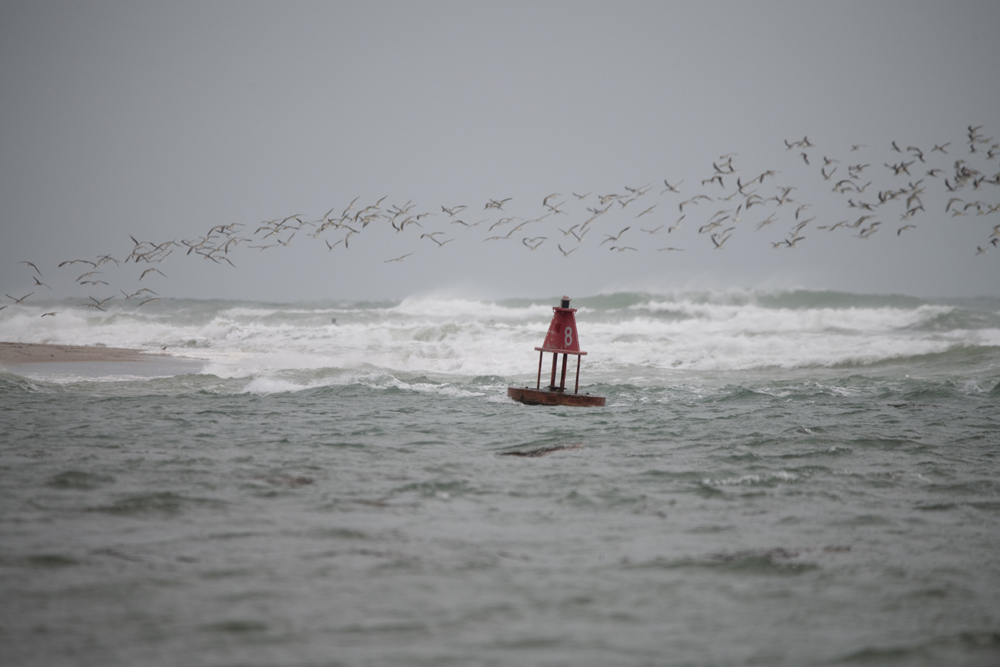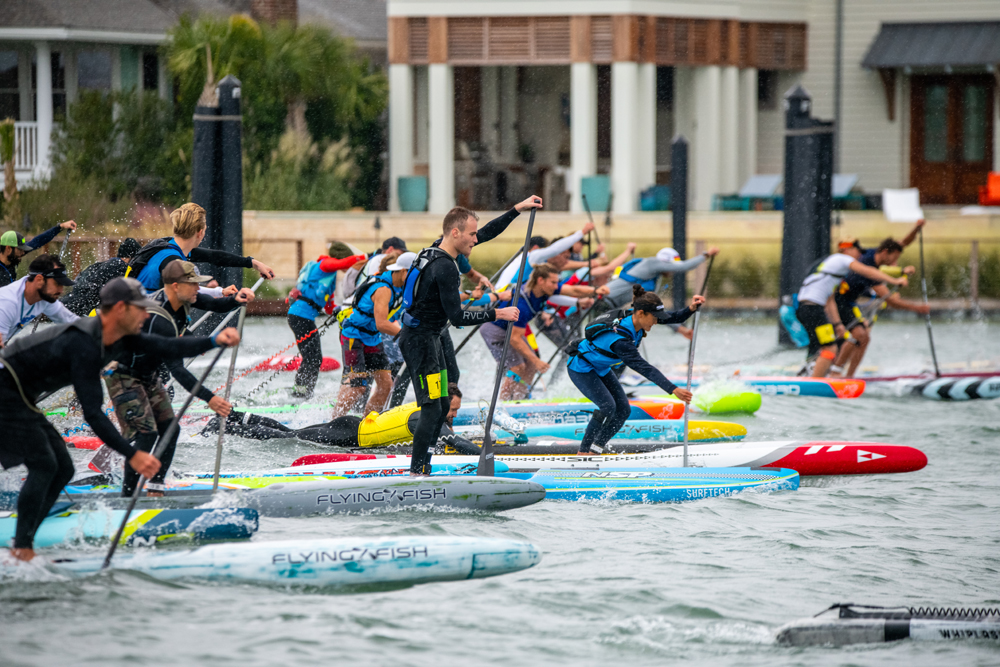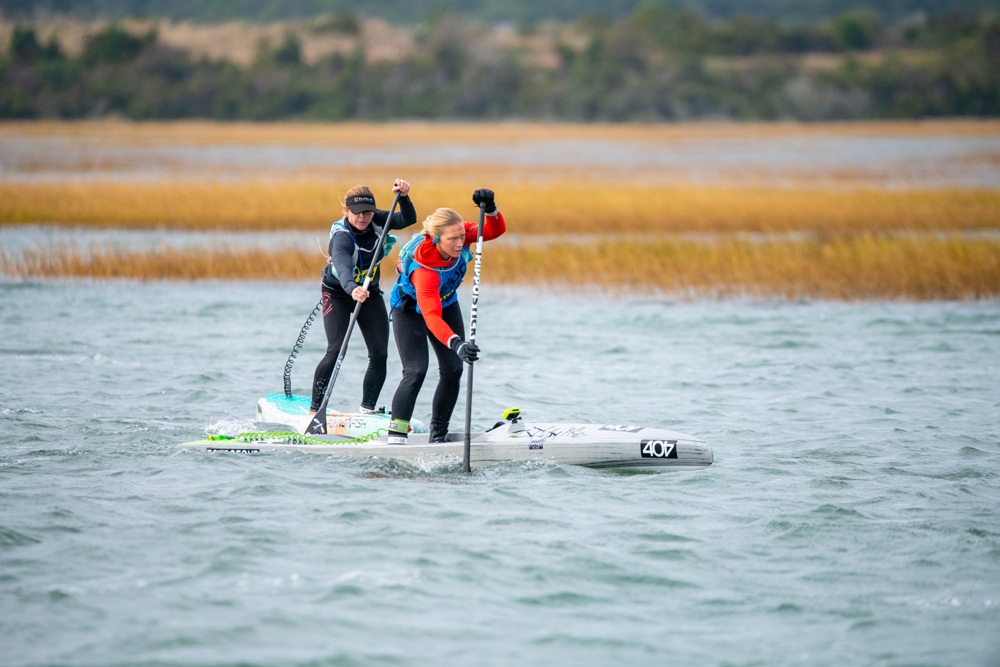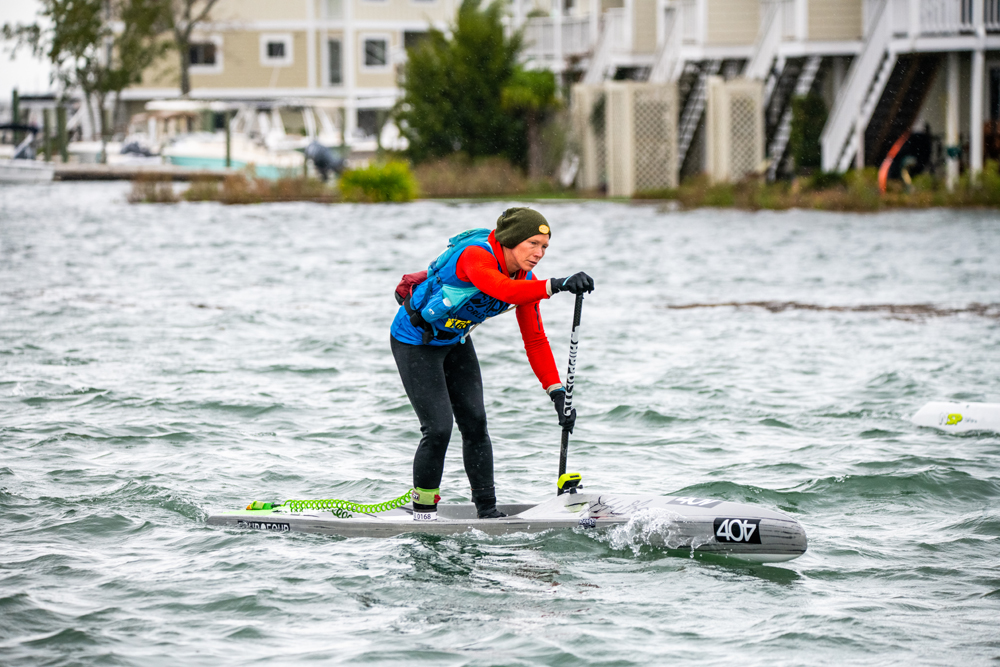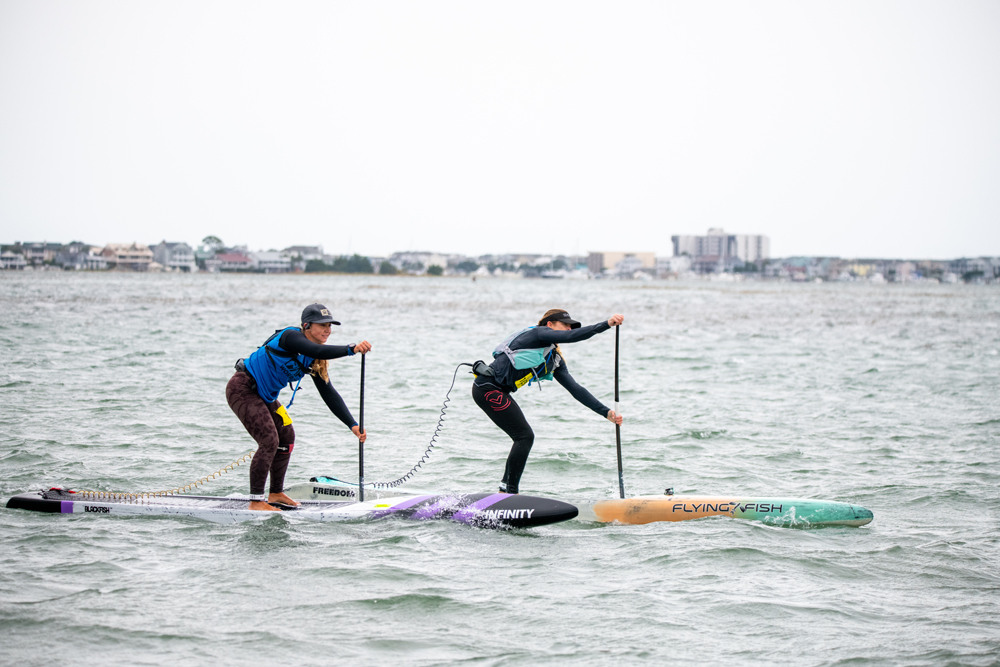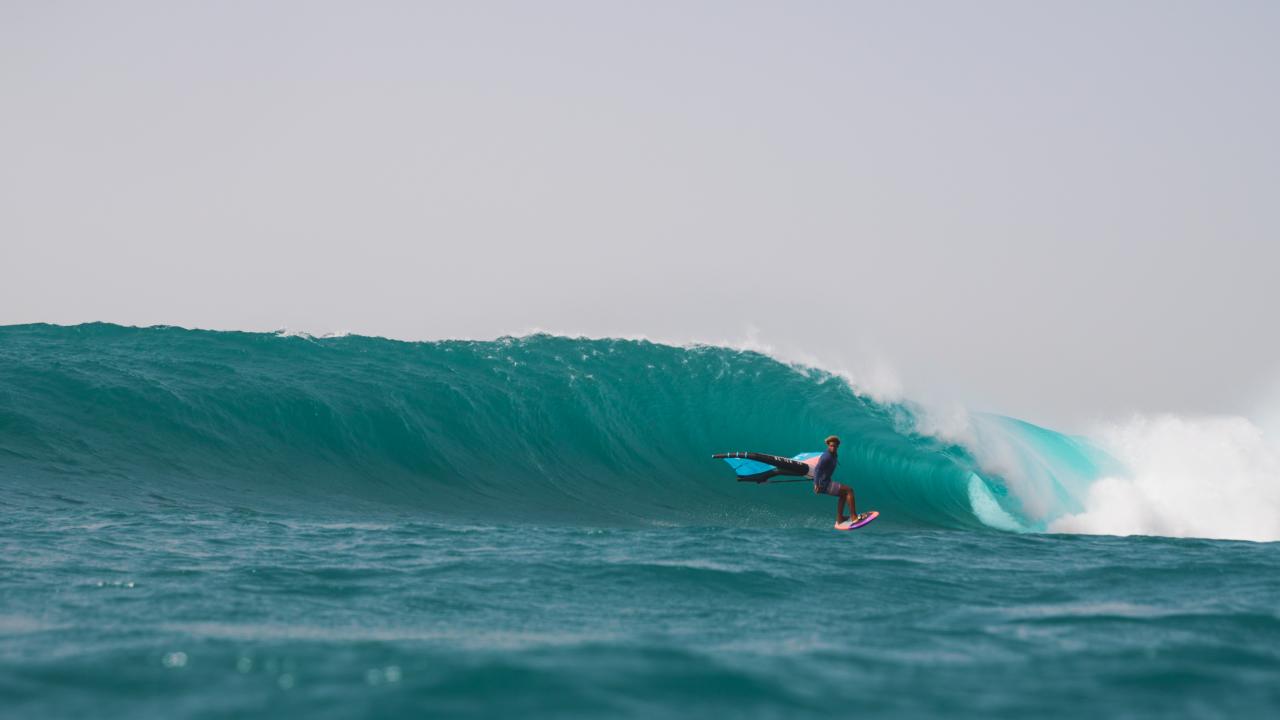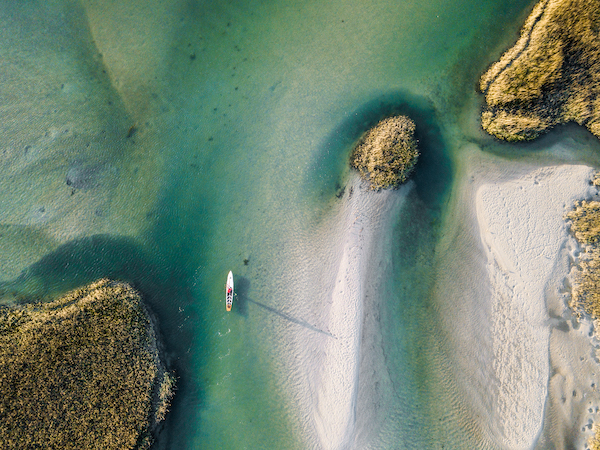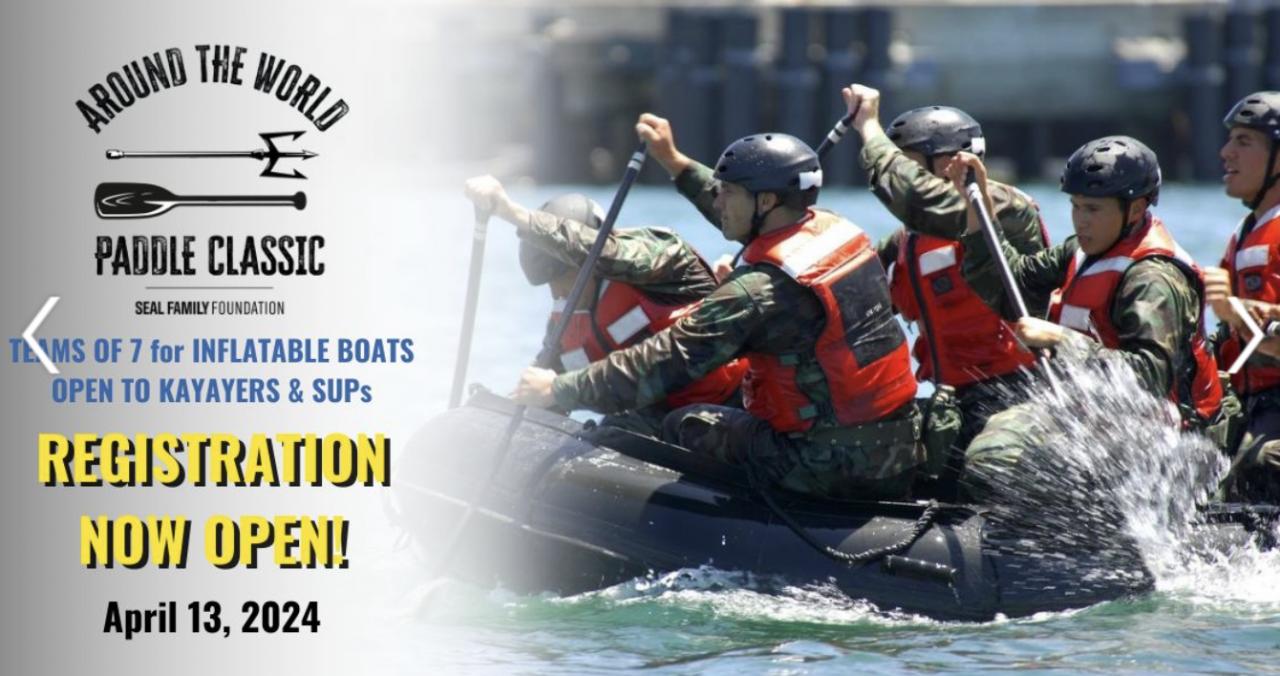Everywhere I looked there were tan, muscular paddlers on long, sleek stand up paddleboards, ready to start the Carolina Cup Stand Up Paddle Races in Wrightsville Beach, North Carolina. I stuck out like a sore thumb wearing a baggy, long-sleeve shirt and boy’s board shorts to cover a body I rarely let see the sunlight, in part because I lacked confidence and also because of my pale, office-worker complexion. My board didn’t help me blend in any better, either. It was notably shorter and wasn’t shaped anything like the other very fit paddlers’ boards. Just in case anyone still had any doubt that I was out of place, the fact that I was holding my paddle backwards was a dead giveaway.
The year was 2011 and that year it was a joint start line for both the Money Island Race and Graveyard Race. I had tried stand up paddling for the first time just 2 months before, fell instantly in love, and bought a board the same week. I had been paddling 2-3 times a week for fun when I saw a poster for the “Carolina Cup” posted at a local coffee shop. I thought to myself, “People are racing these things? I wonder how I stack up? I feel fast on mine!”
I was clueless about the conditions, training, nutrition, equipment, the level of competition, or what to expect. Still, I signed up for the 6 mile race, thinking the 3 mile was for really recreational people and it wouldn’t be a challenge for me. Ignorance was bliss until the start horn blew.
My heart rate was through the roof. To say I was nervous would be an understatement. The pointy boards and their fitness-model-like captains were off like rockets. I kept up for all of 15 seconds before losing steam and falling off the pace, hard. The Graveyard racers flew up the intracoastal waterway, quickly becoming little dots on the horizon. The other paddlers in my race, the Money Island, disappeared around the corner in Lee’s Cut and were out of sight.
There I was, battling a tough upwind section with my paddle backwards on a heavy, unstable recreational board (that in hindsight may have just been a repurposed tandem surfboard that someone offloaded on an unsuspecting newbee). It didn’t take long for me to realize that I was in way over my head. There was no way I could paddle 6 miles in these conditions. I was barely at the 2 mile mark and the other competitors were already a mile ahead.
I cut the course short and followed the 3 mile route along Harbor Island. I had never even paddled Harbor Island before. Little did I know how well acquainted I would become with that 3-mile stretch over the next decade. In a pretty bad mood, I found my way back to the start dock, found the timing person, and told them to mark me as DNF before I left to go enjoy the rest of my Saturday doing non-paddle things.
After a few days, the events of my first ever stand up paddleboard race sank in. I decided that I really liked paddling. I needed a way to get my life and health back on track and I sure didn’t like running or cycling. I didn’t have any real hobbies or interests that I had ever stuck with, and if I let that one race deter me from doing the one thing I found that I actually liked, what would I have to look forward to? I decided to stick with it and get help from people who knew what they were doing.
I found Jason Colcough, one of the original paddlers in the Wrightsville Beach area. He gave me a few lessons along with a properly pointed board, and filled me in on the lingo. They were called “race boards.” I joined John Beausang’s Distressed Mullet paddle meetup group, and started paddling with other people as we discovered better paddling techniques and entered local races together. I followed a training plan paddling 4 times a week, and it ended up being the first fitness plan I ever followed with 80% compliance.
One year later, I had new paddle friends, a carbon fiber paddle, a pointy race board, and more race experience as I lined up once again for the start of the Money Island race. (I still wore baggy shirts and boy’s shorts because if it isn’t broken, why fix it?) After battling the crowd off the start line, I found myself in 2nd place. But over the next 6 miles I was unable to close the gap on the first place finisher. I was actually pleasantly surprised at my finish, and I started to wonder what else I could accomplish if I didn’t give up on things. I decided right then and there that I wanted to stick with paddling until I was able to be competitive in the Graveyard Race… or perhaps even win the whole thing!
These days, I train about 700 hours a year. That means that on average, I train around two hours every day, some days more, some less. It’s a substantial increase in the original training load that yielded such fantastic results in my first year. If I had been training at this level all along, I’d still only be at 7,000 training hours, 3,000 shy of the somewhat “accepted” metric of 10,000 hours popularized by Anders Ericsson in his landmark study about peak performance. He summarizes that study and elaborates on the nuances of the “Ten Thousand Hour Rule,” in his book, PEAK, one of my all-time favorites.
Every year that I line up for the Carolina Cup, there’s a little thought in my head that says, “Maybe this is my year.” But that is always overshadowed by my memory of where I was that first year and a feeling of deep gratitude for what I’ve been able to accomplish. I sometimes think of where I’d be if I had not stuck with paddling year after year after not winning the first Graveyard. I continuously resolve that no matter the outcome of the race, I’m definitely better off and I’ll keep paddling no matter how badly losing hurts.
Along the journey, I picked up valuable lessons, like: Going out too hard in a race is a recipe for disaster.You can be good at racing and not be the fastest paddler on the course on any given day. Strategy can be more important than fitness when it comes to racing. Improvements get smaller and harder to obtain the longer you’ve been at it. Undereating and overtraining will cost you valuable months of training while you recover.
More than anything, I’ve learned patience and acceptance. It’s important to stay in the game, not just the one you're playing that day, but the long game. The days that make you want to quit and run away are going to vastly outnumber the days you win and renew your hunger to stay after it. If you love what you’re doing and you’re having fun doing it, the results are just the icing on the cake. Win or lose, you drive home and keep training, for your body, for your brain, and for your spirit.
The joy found in the daily journey crosses over into other aspects of life. Today I’m more organized in my business and life, more confident in everything I do. My mind is clearer and my health is something that brings me fresh confidence that I didn’t have before.
A decade after my first ever Carolina Cup, I stood on the start line again as a new woman. Although my name was still the same, I knew that my mind and body weren’t. I figured that there were very few cells left in my body that were there 10 years ago. The neural network that controls my thoughts had also been completely rewired by the hours of training, racing, and meditating. After 10 years’ worth of experience and a deep understanding of race strategy, course conditions, and the level of competition, I was ready for another year. Or was I?
The start gun went off, and after a confusing race. To start it didn’t take long for me to remember that knowing what to do and actually doing it are two very different things. Humans are creatures of habit, and we have to focus really hard when we’re trying to create new habits.
I went out leading, a little too hard. This time, instead of surging when the other women made their move, I physically couldn’t. Mother nature had smacked a giant glob of reeds right on my fin. I knew that if I tried to keep up while dragging this Loch Ness monster, I would burn out very quickly.
It was pretty defeating in the moment, though. I felt like a decade of “knowledge” was pretty wasted on me. I watched three competitors slowly put a gap on me. Kim and Juliette battled bump for bump in the downwind leg, increasing their lead. Rika also slowly put a few board lengths on me in that section. As the moments passed and the gap grew, I had the unsettling thought that I may never win the Carolina Cup. A scary reality in my head was that we can work hard for 10 or more years, dedicate our lives to something, and still, for reasons outside of our control, never achieve what we set out for. My pace slowed.
I began a stern self-talk, telling myself over and over not to give up or quit as I had so many times in the past.
My self-talk was downright despicable. The nicest thing I had to say was:
“Good job April… How many big races did you have in 2021?"
“Two,” I answered myself.
The little red guy on my shoulder continued, “How many did you make THE EXACT SAME MISTAKE AT?”
“Two… obviously.” (At least I hadn’t lost my sense of humor and knack for sarcastic comebacks.)
“How many more times are you going to make the same mistake before you learn something? What’s wrong with you? Why do you keep making these rookie mistakes?”
“Because I like this fin. And I don’t want to do anything different on race day.”
Even though I was a little mad at myself, I opted NOT to jump off my board to clean my fin of the reeds. Doing so would cost me time. Looking around, I realized that if I cleaned them off, I’d probably just get more. Depending on where I stopped to clean them off, I would just move backwards if I stopped paddling for too long. I started trying to burst them off with little sprints onto bumps as I swished the board from side to side.
I continued to watch the other ladies duke it out. Sometimes I felt like I was holding the same speed. Other times I felt like they were increasing the gap.
As I neared the south end of the course, my board was sliding out on the bumps, a clear indication that there was a lot of junk on my fin. I knew there was a little sandbar poking out there. I used it to hop off in knee deep water, remove the junk from my fin, and hop right back on without losing hardly any time at all. In my mind, the damage was already done; I was over 10 board lengths behind Rika and Kim and Juliette, who were little specks in the distance. In reality, my speed for the effort I was putting in drastically increased when I cleared my fin.
As we neared the intersection of Shinn’s creek, Masonboro inlet, and Bank’s channel, I saw Brad Howard. A long time paddle friend and one of the original founders of The Carolina Cup, he was driving a safety boat by himself in the wind and rain. I had just seen my GPS pop up a 30 minute mile during one of the 38mph gusts of wind and I was over it. I debated waving him over and telling him to give me a ride back. We’d both be stoked to head back and I knew I’d be doing us both a favor.
Instead, I gave Brad a big smile, waved at him like a kook, and asked if we were having fun yet. We chatted for a minute. I was barely moving even though I was still paddling. We talked about the king high tide being crazy, the wind being crazier, and I told him I was going to cruise left as I crossed the inlet. He smiled like that was a good idea and said there were 2 foot wind swells out there.
I didn’t get in the boat, obviously. I didn’t need to. The boat is for people that need it, so I decided it would be selfish and irresponsible to just hop in a boat because I was being a wimp. I was going to finish this race come hell or high water - and the latter was entirely possible.
As I got to the intersection, I noticed the other ladies getting washed out with the tide. They were forced to fight the wind and the current just to stay in one place.
I knew what that felt like, having been in that exact same position many times before in practice paddles. I didn’t want to do that, so I took a hard left and rode an eddy up Shin’s Creek before letting the current pull me east just a hair, into another eddy. It was a subtle move, but it required very little energy on my part. After that, I was in a very narrow eddy of reduced current heading up Banks channel.
To my surprise, I was gaining on the top three women. It dawned on me that they were probably exhausted from their uphill battle. Moreover, I didn’t have weeds on my fin anymore and I could feel my board glide with each stroke. I started to push a little harder and passed Rika from Japan, then Juliette from Argentina. I pulled in for about a minute behind Kim assessing if I should make a move.
I was in a little in disbelief… I had just come from shooting the breeze with Brad. I had accepted that the ladies were too far, too fast. Now I was going from 4th place to actually being a contender! I’m always scared of Kim Barnes on the race course. I knew that if I made my move too soon she’d burn me out and I would risk ending up back in 4th place. The other two ladies weren’t that far back, after all.
Then I tried to imagine how I would feel if I had just paddled on the endless treadmill of current and wind that she had just experienced after battling on bumps with Juliette for a few miles. I realized that I had been cruising, not easy, but also not pushing due to the reeds in tow. (Ah, the blessing in disguise!) I was probably really well rested, comparatively, while she was most likely exhausted. So I went for it, and it worked.
With no more than 10 minutes left in the race, I pulled ahead with the longest and strongest paddle stroke I could muster.
“I paddle in conditions like this all the time,” I thought as my self-talk started vastly improving. “I have plenty of energy.”
I continued to push to my absolute maximum until the very end, expecting that I’d be caught at any moment. But I wasn’t. I stepped off my board calm and in control as I crossed the finish line, much to my surprise, in first place! Ten years after not crossing any finish lines at all, it hit me hard. My eyes were all teary. I could blame the frigid 30+mph headwind, but I was truly struck by awe and relief.
I felt like a weight had been lifted. Something that I set out to do, that I was losing hope that I could ever do, happened. It really happened! When I started paddling, I had this crazy idea that I could go from who I was to one of the top paddlers in the world. Then it would prove, to me at least, that the human mind and body really are capable of so much more than we think. Maybe it was possible to set out on a path and create your own reality. If it was true for me, then it can be true for you, too.
It wasn’t because of the conditions, training, nutrition, or any external factor, although all of those are a part of it. It was because I didn’t give up. At my first race in 2011, I was in over my head. I gave up because I didn’t feel there was any other good choice that day. I did what I had to do.
I guess that’s what Kenny Rogers meant when he said, “You gotta know when to hold ‘em; know when to fold ‘em.”
Sometimes it’s okay to quit something. Sometimes it’s okay to walk away… or even run. When you give up or quit for legitimate safety concerns, that’s not quitting. That’s self-preservation. Only you know the difference, and sometimes when you’re pushing yourself to the next level, it’s a blurry line (but that’s a topic for another day). Personally, paddling has given me the wisdom to see the difference.
My tears had nothing to do with the win, and everything to do with realizing that I could never be in that exact moment crossing that finish line if I had given up anywhere along the journey. They had nothing to do with the competition, the crowd, or closure. They were there because I was feeling so alive and so present for the past 10 years of my life, and because I knew when to push and when to preserve.
For the last decade, there have been dozens of opportunities to give up along the way, especially that last opportunity to hop in a safety boat the day of the race! I had not given up on training each day, nor on my nutrition every day. I had paddled in crazy conditions, continuously pushing myself. I was honest with myself about what I could do, I never made excuses, I never lacked courage, and I never ran away even when it hurt to stay on the path. Truth be told, I ended up building a life I enjoy living, a far cry from where I was in 2011.
When I set out with the goal to win the Carolina Cup, I certainly didn’t think it would take a decade to complete! You don’t always have to go fast, but don’t go slow either. Whether it’s in a huge race or in everyday life, you just have to keep moving forward. You’ll finish… if you don’t give up!

